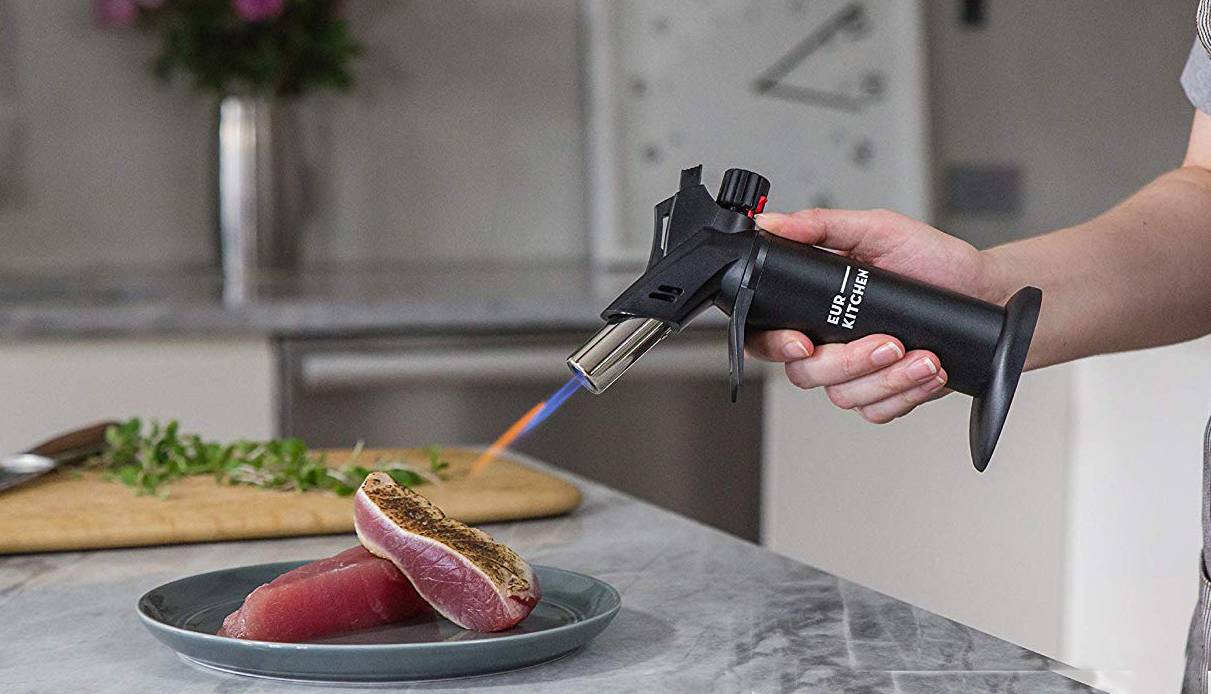
Then aim the torch at the food keeping it moving so that the food sears evenly but does not burn. So for optimal searing results be sure to not have the torch pointed at the food until it has been lit and adjusted to achieve the short, hissing, blue flame. In this type of flame there are unburned hydrocarbons from the fuel that will end up in the food giving it an unpleasant flavor. If the flame is large, with a yellow tip, it is referred to as a reducing flame. In this type of flame the gas is being completely combusted and can be identified by the dark blue, relatively short, flame that hisses and roars. The most important thing is to be sure that the flame produced by the torch is a fully oxidizing flame. The type of gas used is not nearly as important as the technique used to perform the sear. Butane Gasīutane burns cooler than the other gases and is often used in the smaller "kitchen" or "cooking" torches. Propane is the most popular of the gas types because of its low price and adequate heat generation capability.

And since MAP-Pro still carries a price premium, most people prefer to go with straight propane. It is unlikely that you will notice much of an impact when searing sous vide food because of this relatively small difference in temperature. This is the successor to MAPP but is actually just a variant of propane which burns approximately 150-200☏ hotter. However, MAPP is no longer available and has been replaced by MAP-Pro which is actually just an enhanced version of propane. It was sold by DOW at a premium price because of this advantage. Historically MAPP was considered the best gas to use in a sous vide torch because it burned hotter and thus seared faster, than the other gases available. Here are several of the main types of gas used in sous vide torching. There are numerous types of gases that are used in torches and each has its unique set of characteristics. These results would indicate that controlling the temperature at which the sear is performed is the most important factor in reducing the presence of torch taste. Recently, however, some tests run at UC Davis indicated that the primary cause of torch taste was the creation of new, unpleasant, chemical compounds on the food when the heat is too high.

There was often discussion as to which of the more popular fuels: propane, butane, or MAPP caused the greatest amount of torch taste when used. Initially the presence of torch taste was attributed to the chemicals contained in the fuel itself. Torch taste is the unpleasant "gaseous" or "fuel" flavor that is often associated with dishes that have been finished with a torch. The phenomenon of "torch taste" will invariably be brought up whenever the torch method of sous vide finishing is discussed. These can reach temperatures greater than 3,500☏, which will provide enough heat to sear a typical sous vide dish in about 2 to 3 minutes. The best torches for searing sous vide are ones designed for "industrial" uses such as soldering copper pipes, brazing and hardening steel, as well as light welding. Even the most powerful of these reach temperatures of only 2,500☏. They simply do not put out enough heat to sear a typical sous vide dish in a reasonable amount of time. The torches covered in this article are not the small kitchen or pastry torches used for tasks such as caramelizing sugars, browning meringues and melting cheese. But if you're in a hurry you can go directly to my Sous Vide Torch Recommendation. I would like to cover a few sous vide torching topics before presenting the various torch options and my recommendations. This article will focus on the use of a torch to provide the finishing sear on sous vide dishes. This usually entails searing, using one of several methods covered in this guide to searing sous vide foods.
#STEAK SEARING TORCH SKIN#
This might include making chicken or fish skin crispy or creating the Maillard reaction on a piece of meat to get that dark, crunchy, flavorful crust. The final step in most sous vide recipes is to "finish" off the surface of the protein.



 0 kommentar(er)
0 kommentar(er)
